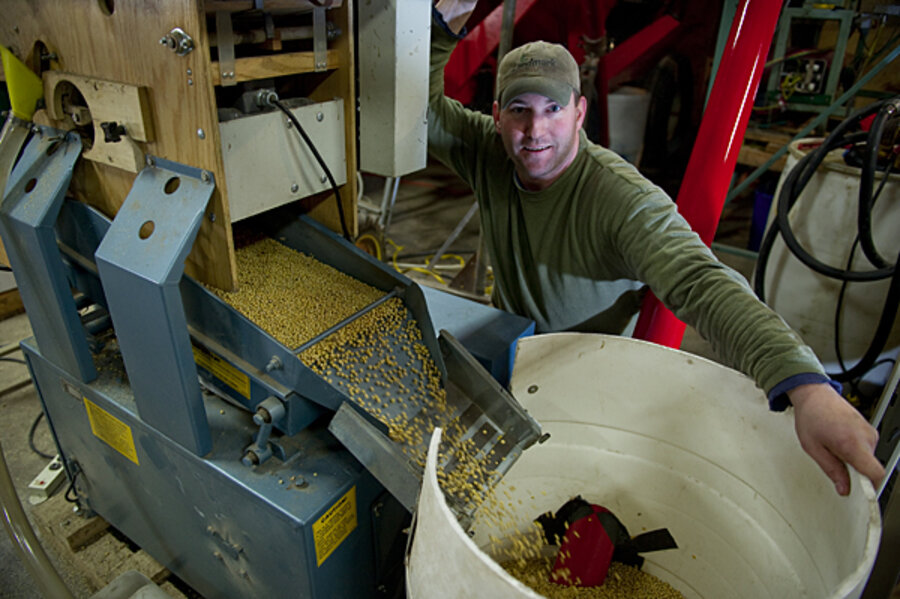Chicken, beef, and pork are all getting more expensive. And some of this increase can be directly traced to higher energy prices.Federal law mandates the use of an increasing amount of ethanol to be blended with gasoline. This is the main driver for the rising demand for corn, which can be used to make ethanol, says Bill Lapp, a food economist at Advanced Economic Solutions in Omaha, Neb.
“As the amount of corn used to make ethanol rises, that ultimately increases demand and thus raises the price for corn,” he says.
As the price of corn rises, there is a ripple effect on the cost of beef, chicken, and pork, as corn is also used for feed, says Mr. Lapp.
If farmers increase their acreage of corn to take advantage of higher prices, that potentially reduces the acreage they devote to other food commodities, such as wheat, rice, and soybeans. This can increase the prices of these crops.
Once foodstuffs leave the farm to head for market, it’s also more expensive, since much of it travels by truck. Moving a truckload of beef from Omaha to New York, a distance of about 1,250 miles, costs an extra $361 if the trucker gets seven miles to the gallon.
Farmers are dealing with higher energy costs in other ways. Like many others, they have to buy petroleum-based products – which cuts into their profits.
Diesel prices are now $1 a gallon higher than a year ago.
“We use diesel for almost everything we do, whether it’s planting the crop or spreading fertilizer or harvesting,” says farmer Jamie Derr of Marshall, Wis., who is also president of Solarmass. “The rising energy price cuts into your margin.” He has planted a field of pennycress, which he will make into biodiesel to run his farm equipment and – he hopes – cut down on his rising fuel costs.
The fertilizer used by many farmers requires a significant amount of energy to produce, and that has been partly responsible for an increase in fertilizer prices. According to AgFax.com, an agriculture news source, the price of starter fertilizer, which is applied at the time the seed is planted, is up 78 percent compared with last March.
Mr. Derr says the price of the fertilizer he uses is up 40 percent since August. To control his costs, he is working with an adjacent dairy to buy manure to spread on his crops this planting season.





